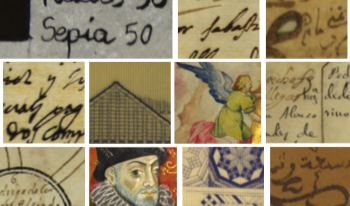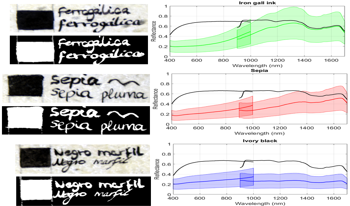
The HYPERDOC database is a publicly available hyperspectral imaging resource for the analysis of historical documents and mock-ups of inks and pigments. It consists of 1681 hyperspectral datacubes, containing millions of reflectance spectra, covering the VNIR (400–1000 nm) and SWIR (900–1700 nm) spectral ranges, including different ink recipes and documents from the 15th to 20th centuries, preserved in two archives in Granada, Spain. We will present the data acquisition process and structure of the database, followed by a live demonstration of its functionality, guiding participants through its use. Additionally, three applications of the database will be summarized, including document binarization, ink classification using machine learning techniques, and ink aging analysis. The HYPERDOC database facilitates the integration of advanced imaging techniques into document analysis and preservation, contributing to the non-invasive study of historical materials.

The aim of this work is to provide the cultural heritage community with a comprehensive hyperspectral image database of handwritten laboratory samples, including various writing inks commonly found in historical documents. The database contains 195 samples registered in the VNIR (400-1000 nm) and SWIR (900-1700 nm) spectral ranges, along with complete information about the ink recipes (components and concentrations used for each ink and mixture), and their corresponding Ground Truth images. The database is now publicly available as part of a bigger database related to the Hyperdoc project and can be used to perform different tasks. We present here one example: the classification of iron gall vs non-iron gall inks.